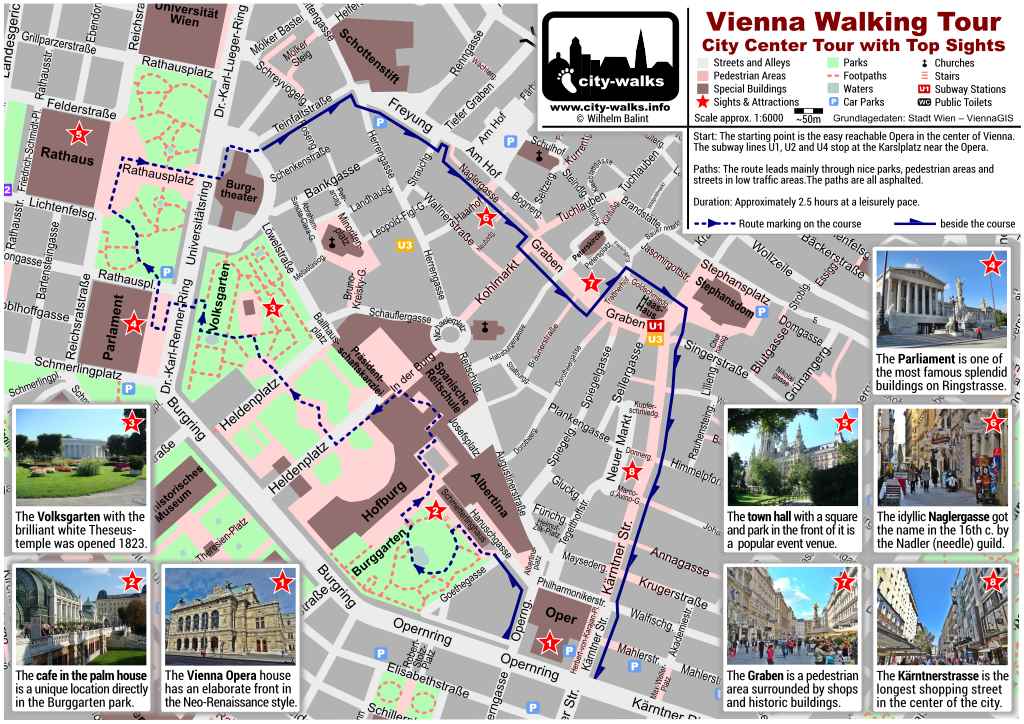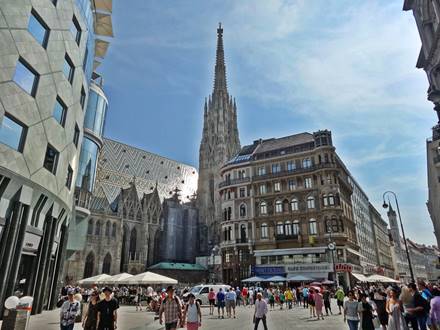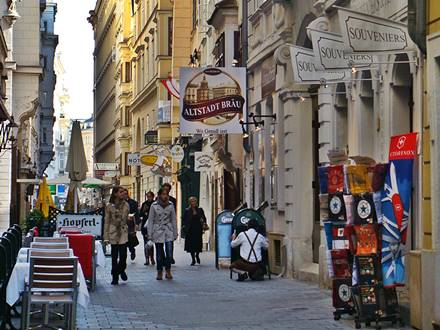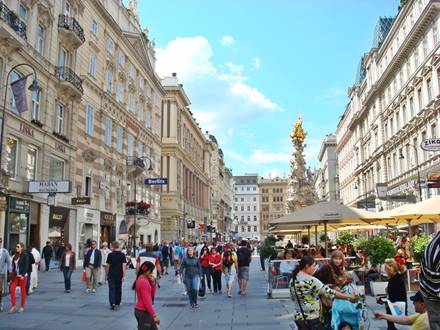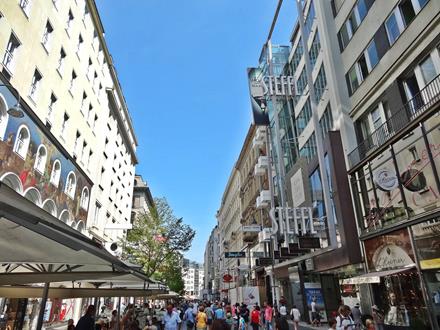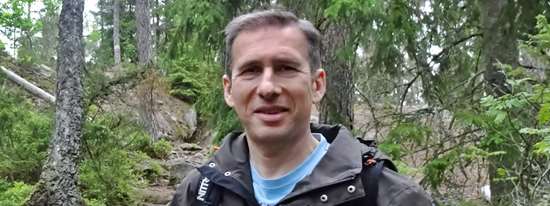Vienna City Tour Map Download
If you want to save the map locally click on your right mouse button (at touch displays long press) and choose -Save Target / Link ... -
To open the PDF file just click on the picture of the City Tour Map!
Old Town Vienna
The old town in the city center was surrounded by a city wall until the middle of the 19th century. At that time the city wall was demolished and the ring road was built on this huge area around the city center. Today the ring road is divided into different sections with separate names. It runs around the 1st district, where the old town of Vienna is located.
Since 2001 the old town and the ring road belong to the UNESCO World Cultural Heritage sites. The main reason for this honor is the numerous historical buildings from different cultural periods. This includes the State Opera, City Hall and Parliament. These 3 famous buildings are stations on the city walking tour.
The tour map will also guide you through narrow alleys with history, like the Naglergasse. You will walk through some popular pedestrian zones in the old town. These include the Graben and the Kärntnerstrasse with many well-known stores. And if you like to relax in a park, then this is also possible on the route. The Volksgarten and the Burggarten are some historic parks on this walk.
Stations of the City Walking Tour
Opera performances have a long tradition in Vienna. The first performances took place in wooden theater halls in the 17th century. Since then, there have been various performance venues until 1869, when the current Opera House on the Ring was opened. Unfortunately, the entire building has not been preserved in its original state to the present days. Some areas were destroyed during World War II. Fortunately, the facade on the front, which is facing the Opernring, has been spared. Here you can see the Renaissance arch style from the original 19th century facade.
Until the beginning of the 20th century the Burggarten was the private garden of the imperial house. Since 1919 the Burggarten is open to the public. This small park is a cultivated green oasis right between the Hofburg and the Albertina Museum. Since 1826 a palm house with approx. 120 m length is the biggest building in the Burggarten. Today there is a café-restaurant where you can enjoy the special ambiance of this huge glass house. In front of it you can find a terrace with beautiful view over the Burggarten. Both places there are perfect for a coffee break.
The Volksgarten was already opened to the citizens of Vienna in the year 1823. Even then, the Theseus Temple was already in the center of the park. The building was modeled on a Greek temple and shines in its original white paint. The rose garden is also worth seeing. There you can find numerous chairs for a little rest. Today you may use these chairs free of charge, but until about the middle of the 20th century you had to pay a fee. There were so-called chair women and they collected the fee. This was usual at that time in many Viennese parks.
The Parliament is one of the most famous magnificent buildings on the Ringstrasse. The building was designed in Greco-Roman style by the architect Theophil Hansen. This construction was his life's work. He was able to witness the first session of the House of Representatives in the new parliament building in 1883, but he did not witness the complete finishing of the building. It took decades to finish the whole construction. Thus, the statue of Pallas Athena in front of the Parliament was completed about 30 years later. The 5,5 m high statue of the Greek goddess of wisdom dominates the front of the parliament building.
The Vienna City Hall is another remarkable magnificent building along the Ringstrasse. It was built in Neo-Gothic style and was completed in 1883. At that time, the emperor Franz Joseph's guideline was to keep the height of the new town hall lower than the nearby church Votivkirche. The architect Friedrich von Schmidt did not quite stick to it. The highest tower of the new town hall was built only 98 m high and so it remained under the 99 m high Votivkirche. However, at the end he put the 5 m high town hall man made of copper sheet on the top of the tower and thus he bypassed the emperor's instructions. On the square in front of the town hall you can find a copy of the town hall man, which you can see up close. The square is called Rathausplatz and is an important venue where the famous Vienna Christmas market takes place.
The Naglergasse is an alley steeped in history and located in the center of the old town. In the year 1547 the term Naglergasse was used for the first time. The guild of Nadler (needle) is the name giver to this alley. Since the 15th century the guild of Nadler settled in this area of the town. These specialized blacksmiths mastered the craft of making a wide variety of needles. Today you can find small stores and restaurants in this idyllic alley.
In the old town of Vienna you will find a spacious pedestrian zone, which is ideal for a walking tour. A large area of this car-free zone is covered by the Graben. The area of the Graben was once the moat in front of the Roman military camp Vindobona. This is where the name of the today's glamorous street comes from. The pedestrian street is lined with magnificent house facades, behind which you can find some well-known traditional Viennese stores. On the route through the Graben you will come across another highlight, namely the marble plague column. This was completed by 1694 and was the first plague column in the entire territory of the Habsburg monarchy. Based on this model, many other plague columns followed in the monarchy.
The origins of the Kärntnerstrasse road dates back to Roman times. Already in the Middle Ages, the road led from the St. Stephen's Cathedral in the center of the old town to the Kärntner Gate in the city wall. Today, the bustling pedestrian zone is the longest shopping street in the center. Here you will find numerous shops and impressive flagship stores of well-known companies. Among them is the prominent crystal manufacturer Swarovski.
Details to the Vienna City Center Tour
Start:
The starting point for the Vienna City Center Tour is the easy reachable Opera in the heart of Vienna. The metro lines U1, U2 and U4 stop at the Karlsplatz near the Opera building.
Paths:
The route leads mainly through nice parks, pedestrian areas and streets in low traffic areas. The paths are all asphalted. So you are able to reach all the most important sights in the old town of Vienna by using a route which avoids the traffic in the city as good as possible.
Duration:
The Vienna City Center Tour takes approximately 2,5 hours at a leisurely pace. In this time estimation an extended sightseeing and a bit of window shopping on the way is also already considered.

